We take a look at how to train and strengthen the most important muscles used in running
Some insight into how an Osteopath sees their patients
This article shows what it is like to think a little bit like an Osteopath.
These Creepy X-Rays Will Make You Look At People In A Whole New Light
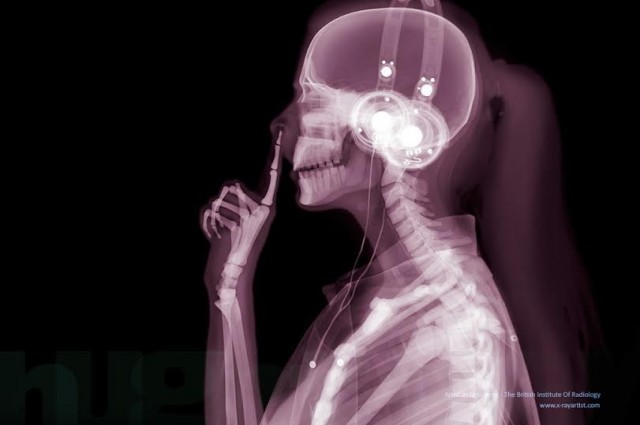
photo credit: Hugh Turvey
Normal, everyday gestures can look really strange when you get down to the bones of it all. Artist in residence Hugh Turvey at the British Institute of Radiology created these digitally altered images using X-ray equipment, colorization and shadow photography.
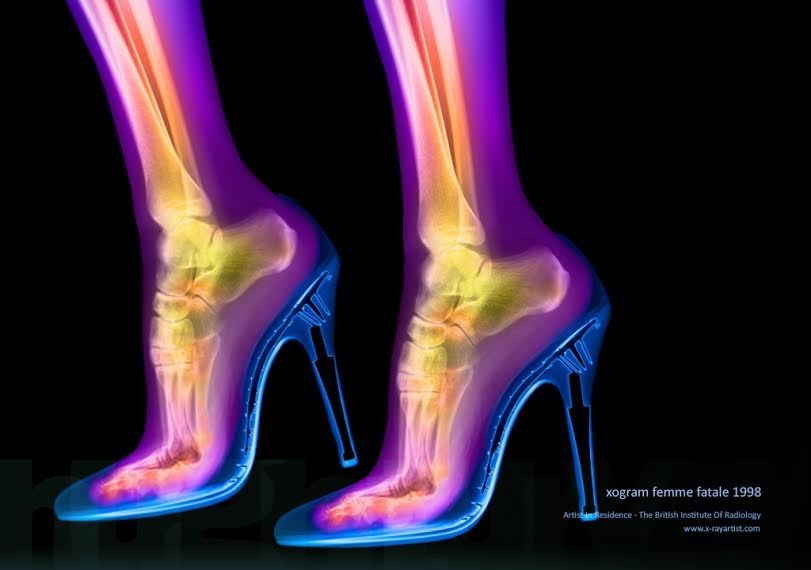
You can see the intense, unnatural angles at which the bones of the feet are bent in high heels. Dramatically abnormal, this may make you rethink wearing them every day.
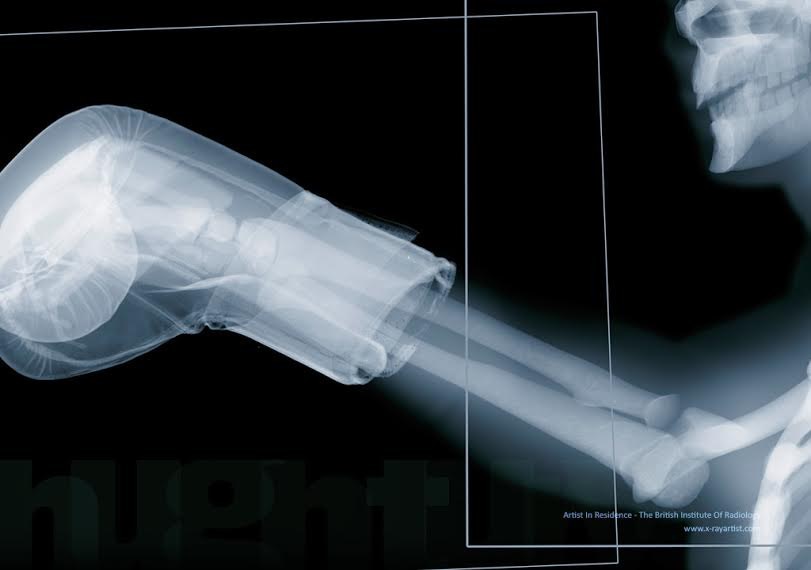
Throwing a punch just seems very unwise, even when wearing a padded boxing glove. If you were to pack a powerful enough blow, it’s clear to see how the radius and ulna (bones of the forearm) could easily fracture and break on impact.
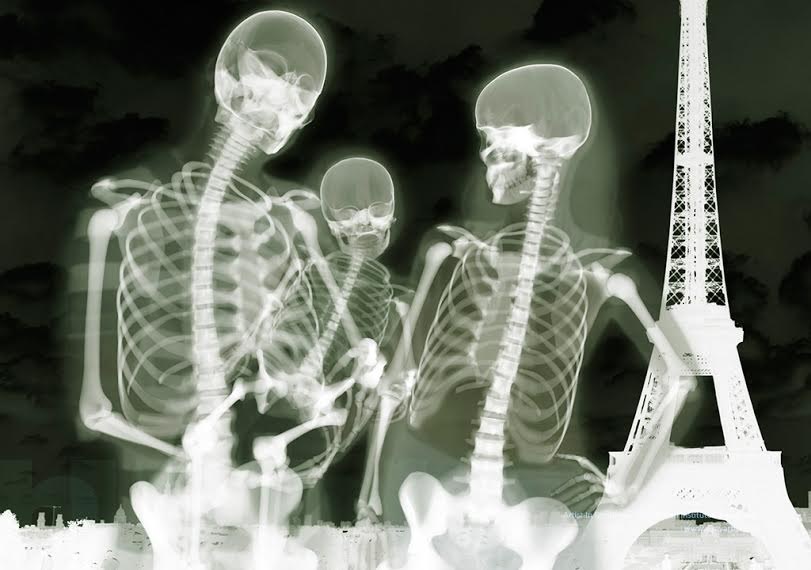
This is probably a lovely holiday photo of a family in Paris. Or is a skeletal army making its way through Europe?
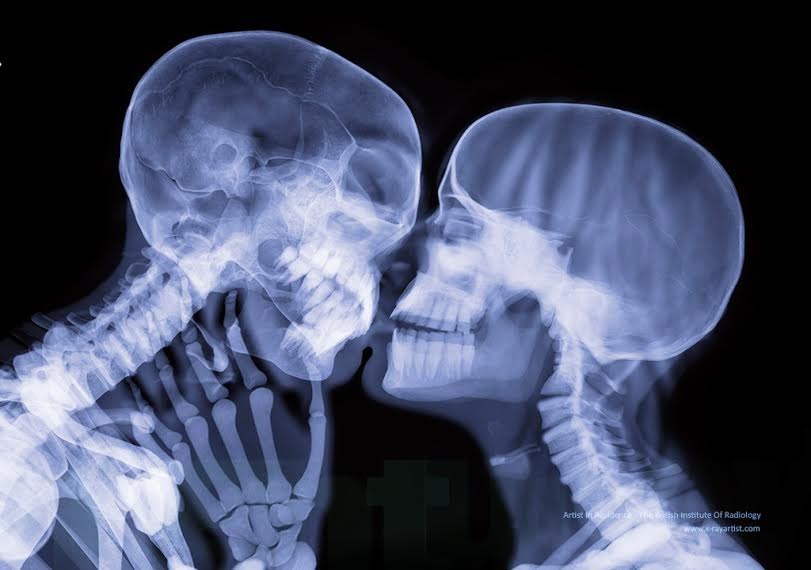
I mean, if you really think about it, kissing is just crudely mashing your skull against someone else’s skull, but there’s soft tissue in the way, and this feels nice, I guess? It definitely looks unusual in X-ray form. Humans are weird.
You can see more of Hugh Turvey’s artwork on his website.
Emergency Osteopathy at Wimbledon Tennis
 Centre for Osteopathic Research and Excellence CIC
Centre for Osteopathic Research and Excellence CIC
6 July

Emergency osteopathic techniques keep Andy Murray on course at Wimbledon. “The trainer came out, manipulated my back, gave it a few cracks…I thought I played very well, the way I finished the match is the way I want.” Perhaps we should think about working in A&E?
Osteopathy for work
You can use the following text to add to your website, blog or newsletter to inform your patients about osteopathy; simply copy and paste it into your own pages and edit it to suit your own practise.
Osteopathy for work
The health and safety executive estimate that in 2013/14 there were 526,000 cases of work related musculoskeletal disorders (MSDs) – about 42% of all work related illnesses
MSDs are the second biggest cause of absence from work, effecting over 1m people at a cost to the economy (estimated in 2007) of £7bn.
If you are self-employed, taking time off work with musculoskeletal problem can have a devastating effect on you and your family’s financial security, so getting back to work as quickly as possible is essential. That can seem impossible when you’re in pain and unable to complete your usual daily activities, but movement really helps.
The Work Foundation recommend that you work with your employers and healthcare professionals if effected by MSDs to find ways of returning to work as soon as possible using a combination of treatment, lifestyle changes and adjustment to working conditions. They also suggest that early intervention is key to recovery, hastening your return to a normal, healthy lifestyle and limiting the negative psychological effects of an extended period of sick leave.
How Osteopaths can help;
• Fast access – our osteopaths are usually able to see you within a couple of days of seeking an appointment. As osteopaths are primary healthcare professionals you don’t need to be referred by a GP unless you are seeking NHS funded treatment or your health insurance provider insists that you see a GP first.
• Treatment and advice – once they have assessed your condition an osteopath will usually begin treatment straight away. They can also provide advice on how to avoid making the condition worse or re-injuring yourself.
• Inexpensive treatment – Many MSDs can be treated by osteopaths over a few visits. Treatment costs just [insert your fee] per session, which compared to loss of earnings or productivity is a worthwhile investment to help you return to work promptly.
• Fit notes – A fit note provides your employer with advice on what they can do to help an employee return safely to work. This may include adjustments to working conditions, such as reduced hours, a different work station set up, or recommending avoiding activities that may prevent or slow recovery, heavy lifting for example. Osteopaths are able to issue fit notes which will give employers this expert advice.
• Onward referral – With your permission, we are able to share information about your health with other healthcare professionals, such as your GP. If your condition requires the intervention of another expert, we can provide a letter of referral detailing the diagnosis and any treatment that we have been able to provide, which may help you more rapidly get the help you need to return to health.
▶ Why Does Your posture Shift During Pregnancy? – YouTube
It Feels Instantaneous, but How Long Does it Really Take to Think a Thought? | IFLScience
As inquisitive beings, we are constantly questioning and quantifying the speed of various things.
Source: It Feels Instantaneous, but How Long Does it Really Take to Think a Thought? | IFLScience
Cranial Osteopathy for Babies at theOsteopath.net
Sitting and Potential Poor Health Issues
This recent article was recently presented in The Mind Unleashed .
With the continuous progress of technology, we need to put less and less effort to get the things done. It’s not only about jobs which are getting more and more computerised every day; it’s about our lifestyle in general. Too much sitting and potential poor health issues are an everyday reason for many of the complaints seen by Osteopaths.
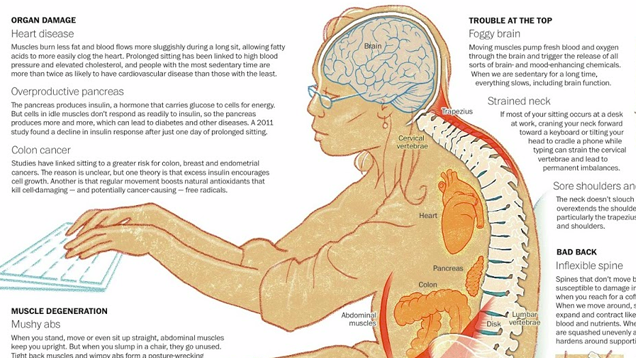
If in the recent past we had to wash the dishes and clean the floor ourselves, now there are people who have a dishwasher and a robotic vacuum cleaner which can do that for us. I’m not saying it’s bad to take advantage of the privileges of technology (I’m a fan of technology myself), but the problem is that, as a result, there are those of us who sometimes tend to avoid physical activity and end up sitting for more hours a day than our parents and grandparents did.
Let’s take a look at some statistics. Approximately 80% of the Americans use the Internet on a daily basis, and there is at least one computer in 90 % of the homes. Of course, it’s not only about the Internet usage or home computers. Imagine how many Americans do office jobs that require sitting in a chair for at least eight hours a day.
The real problem is that even after a long working day, many people continue spending their free time in front of a screen, watching TV, playing video games, browsing the Internet or chatting with friends online.
So when it comes to health problems, the statistics show that 40% of people who suffer from back issues tend to spend long hours sitting at the computer. You may think that back problems are the only major consequence of a sedentary lifestyle. Unfortunately, it’s not that simple, and recent research reveals that too much sitting is linked to a number of health problems, including obesity, heart disease and diabetes.
Here is an infographic that explains the health problems associated with spending too much time in a chair.There are some recommendations on the proper sitting position and exercises too.
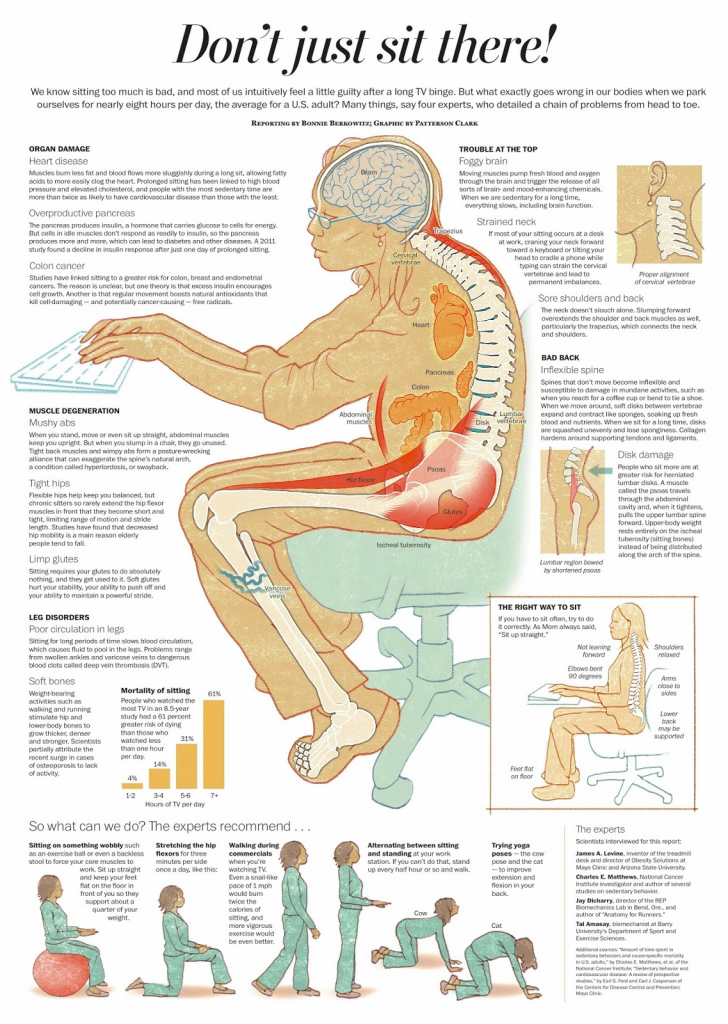
I hope this information will help those who sit for many hours a day improve their lifestyle.
New Web Pages
Watch out for new web pages including interesting articles on the latest scientific developments
Sitting and Potential Poor Health Issues
This recent article was presented in The Mind Unleashed recently.
With the continuous progress of technology, we need to put less and less effort to get the things done. And it’s not only about jobs which are getting more and more computerized every day; it’s about our lifestyle in general.

If in the recent past we had to wash the dishes and clean the floor ourselves, now there are people who have a dishwasher and a robotic vacuum cleaner which can do that for us. I’m not saying it’s bad to take advantage of the privileges of technology (I’m a fan of technology myself), but the problem is that, as a result, there are those of us who sometimes tend to avoid physical activity and end up sitting for more hours a day than our parents and grandparents did.
Let’s take a look at some statistics. Approximately 80% of the Americans use the Internet on a daily basis, and there is at least one computer in 90 % of the homes. Of course, it’s not only about the Internet usage or home computers. Imagine how many Americans do office jobs that require sitting in a chair for at least eight hours a day.
The real problem is that even after a long working day, many people continue spending their free time in front of a screen, watching TV, playing video games, browsing the Internet or chatting with friends online.
So when it comes to health problems, the statistics show that 40% of people who suffer from back issues tend to spend long hours sitting at the computer. You may think that back problems are the only major consequence of a sedentary lifestyle. Unfortunately, it’s not that simple, and recent research reveals that too much sitting is linked to a number of health problems, including obesity, heart disease and diabetes.
Here is an infographic that explains the health problems associated with spending too much time in a chair.There are some recommendations on the proper sitting position and exercises too.

I hope this information will help those who sit for many hours a day improve their lifestyle.